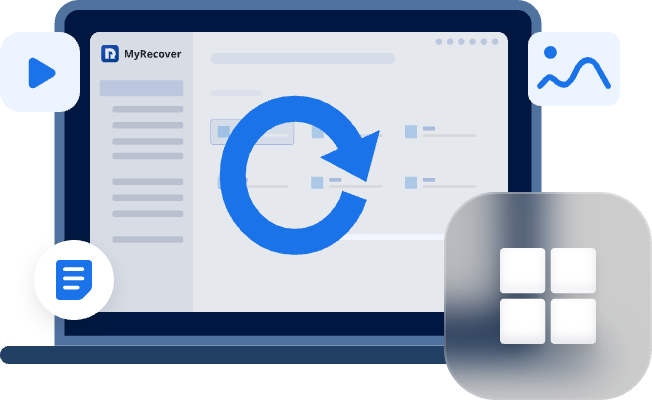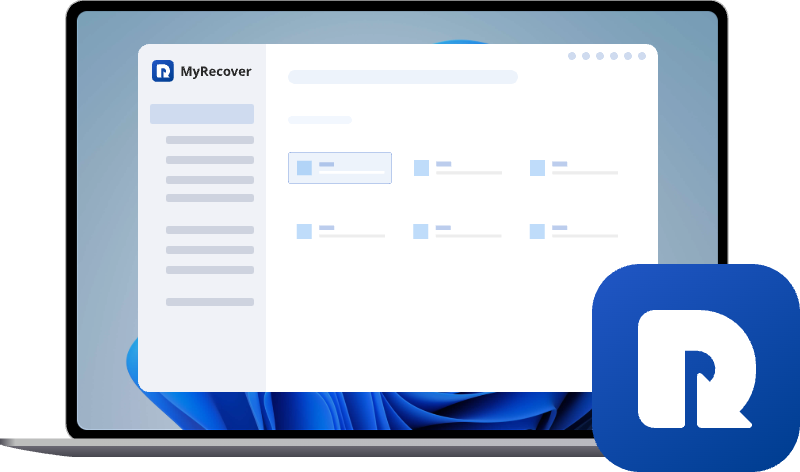My Computer Reset Itself and I Lost Everything: Get Files Back
A sudden Windows reset can feel catastrophic, especially when all your personal files seem to disappear. This article explores the common causes behind unexpected system resets, then provides clear, step-by-step solutions to help you regain control of your files and system.
PC Automatically Reset Itself, Everything Gone
Please help, my laptop has automatically reset itself to factory settings and now I have lost everything that was on the laptop! How do I get my files and Pictures back or revert what has happened?!?
- Question from Nelly
Few things are more alarming than turning on your computer only to find that everything is gone, no desktop files, no documents, and no software. It feels as if your PC has started from scratch. Many users report that "my computer reset itself and I lost everything" seemingly out of nowhere, especially on Windows 11 systems.
This situation is distressingly common. A Windows 11 reset can occur after failed updates, system crashes, or hardware errors. Sometimes, users accidentally trigger a Reset this PC operation without realizing it, which reinstalls Windows and may remove files.
Explain Why the Computer Resets Itself
There are several reasons why Windows 11 randomly reset or performed a system reinstall on its own. Below are the most common causes:
🧿Windows Update Failure
If an update encounters a serious error, Windows might attempt a self-repair that reinstalls the system to restore functionality.
🔔System Instability or Corruption
Damaged system files, registry errors, or boot issues can cause Windows to revert to default settings or perform an automatic reset.
🖥️Accidental User Action
During troubleshooting, you might have clicked "Remove everything" in the Reset this PC wizard instead of keeping files.
📌Malware or Ransomware
Malicious programs can corrupt or delete key system components, forcing Windows to rebuild itself.
💽Hardware Issues
Bad sectors or unstable power supply may trigger recovery behavior in modern systems.
How to Recover Lost Files After System Reset
When encountering such a situation, many users wonder: Can lost files still be recovered after a system reset? Actually, when Windows 11 resets itself, your data might still be accessible through right solutions. Below are several methods you can try.
- Notes:✎...
- Before you proceed: avoid writing new data on the same drive to prevent overwriting your lost data.
Method 1. Check Windows.old Folder
If you chose "Keep my files" when Windows performed a reinstallation or update, your personal files usually are moved to a Windows.old folder within the new system. Check if this folder exists on your system.
Step 1. Open File Explorer and look for the Windows.old folder (typically located at C:\Windows.old).
Step 2. Open the folder, you will see a folder names with your old user account. Select the files in the folder and put them into a safe location.
Method 2. Restore from Backup
If you were in the habit of using any backup tools such as File History, Backup and Restore, or OneDrive to back up your personal files regularly before the system reset, you can restore the files from the backups.
👉File History:
If you've enabled File History on Windows before data loss, open "Restore your files with File History" and choose the files you want to restore.
👉Backup and Restore:
Open "Backup Settings" and choose a created backup, then select files or folders to restore.
👉Cloud Backup Tools (OneDrive):
If you have synced the files to OneDrive, even if these files have been permanently deleted in the local folder, you can still find them in OneDrive's Recycle bin. However, note that OneDrive's Recycle Bin only retains deleted files for 30 days.
Method 3. Check for User Profile
Sometimes, after a reset, Windows fails to load your user profile. Instead, Windows will log you into a temporary profile, making your files appear missing.
Step 1. Open File Explorer and locate C:\Users.
Step 2. Look for another user folder that matches your old account name or contains your missing files. If you find a folder like User.000 or User.old, that’s often your original profile.
Step 3. Copy the files you wish to recover to safe destination folder.
Method 4. Recover Lost Files After System Reset with MyRecover
If you unfortunately selected "Remove everything" when resetting the system and have no backups available, turning to a professional data recovery tool will be your last resort. Among numerous options, MyRecover stands out for its wide compatibility and high recovery success rate.
Let's explore the remarkable advantages of MyRecover:
✅Intuitive interface for easy file recovery.
✅500+ storage Devices Support like SSD, HDD, USB flash drive, SD card, cameras, game console drives and more.
✅Handle with more complex data loss cases like OS crash, formatted, RAW, corrupted or deleted drive.
✅Supports over 1,000 file types including documents, photos, videos, audio, archives, and Outlook data files.
✅Smart scan modes: Choose from Quick Scan for recent deletions or Deep Scan for formatted/corrupted drives.
✅Work not only on Windows 11 /10, but also on Windows 8.1/ 8/ 7 and all Servers.
Step 1. Download and install MyRecover on your computer from Microsoft Store.
Step 2. Launch the program and select the drive (system reset typically only affects the C drive) to scan, then click "Scan". If the C drive has been formatted entirely, you can click on "Deep Scan" after the "Quick Scan" finishes to recover more lost file fragments.
Step 3. Choose the files you attempt to recover from the recoverable lists and click "Recover".
Step 4. Select a destination folder to save the recovered files.
When the process is finished, you'll see the message "Files have been recovered successfully". Then you can access the recovered files in the destination folder path by clicking on "Browse" button.
Bonus tips: How to Fix Computer Reset Itself
If your computer keeps resetting itself unexpectedly, it could be caused by system errors, malware infections, or even faulty hardware. After recovering your lost files, it’s important to address the root cause to prevent future data loss. Here are a few quick fixes you can try.
Run Hardware Troubleshoot Command
Windows provides several built-in troubleshooting tools that can automatically detect and fix system issues that cause random resets. Here's how:
Step 1. Open Command Prompt and run it as administrator.
Step 2. Enter the command "DISM /Online /Cleanup-Image /RestoreHealth" and press "Enter". This ensures that all essential Windows components are intact.
Step 3. Once finished, you can also run "sfc /scannow" command. This will check for corrupted system files and repair them.
Restart your computer and check if the reset issue still occurs.
Scan for Malware
Sometimes malware can trigger forced system resets or interfere with boot configurations. Performing a full system scan can rule out these threats.
Step 1. Open Windows Security from the Start menu, then go to "Virus & threat protection".
Step 2. Select "Quick scan" to perform a quick scan for your system.
Step 3. Once the quick scan finishes, you can choose "Full scan" to perform a comprehensive scan.
Wait for the scan to complete and follow the prompts to remove detected threats.
Create Backup Regularly to Prevent Future Loss
Frequent unexpected resets can put your files at risk. Regular backups using Windows or cloud backup tools ensure your important data remains safe even if your system malfunctions again. Schedule automatic backups weekly or after major system updates is the easiest way to avoid another "my computer reset itself and I lost everything" moment.
Summary
If your computer reset itself and everything is gone, don’t assume your files are lost forever. The right tools and techniques mentioned above can bring your data back. If nothing works, MyRecover provides an advanced yet user-friendly solution to restore your data.
Want a smoother, hassle-free data recovery experience? Consider upgrading to MyRecover’s Professional version. It offers unlimited recovery capacity, file preview, and even rescues data from crashed systems covering all your needs during the recovery process.


